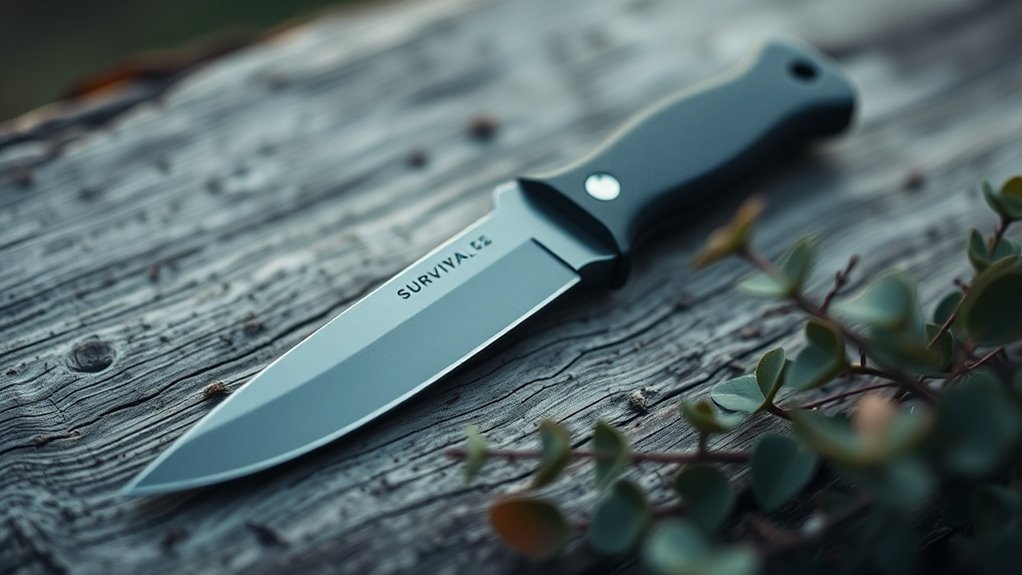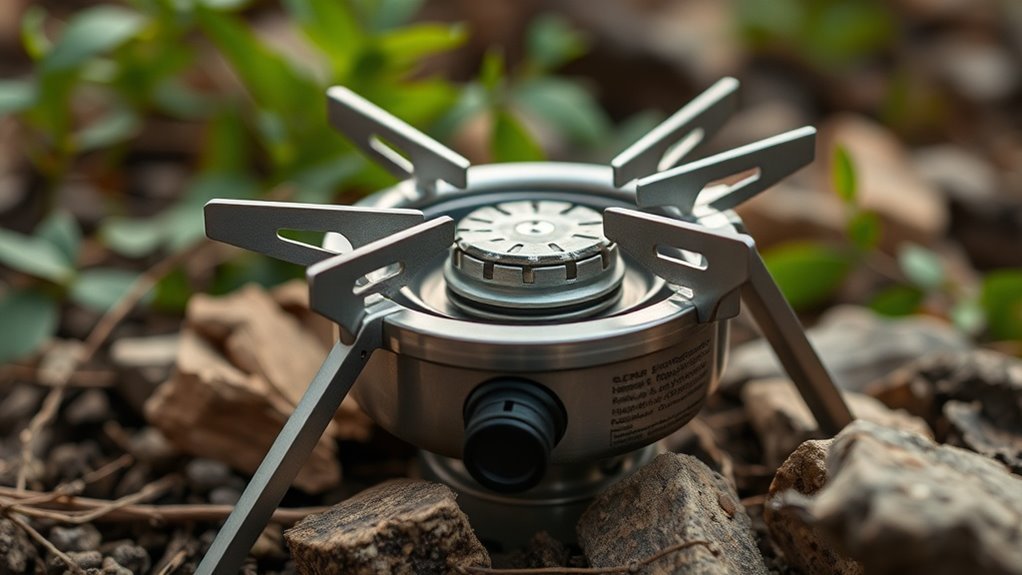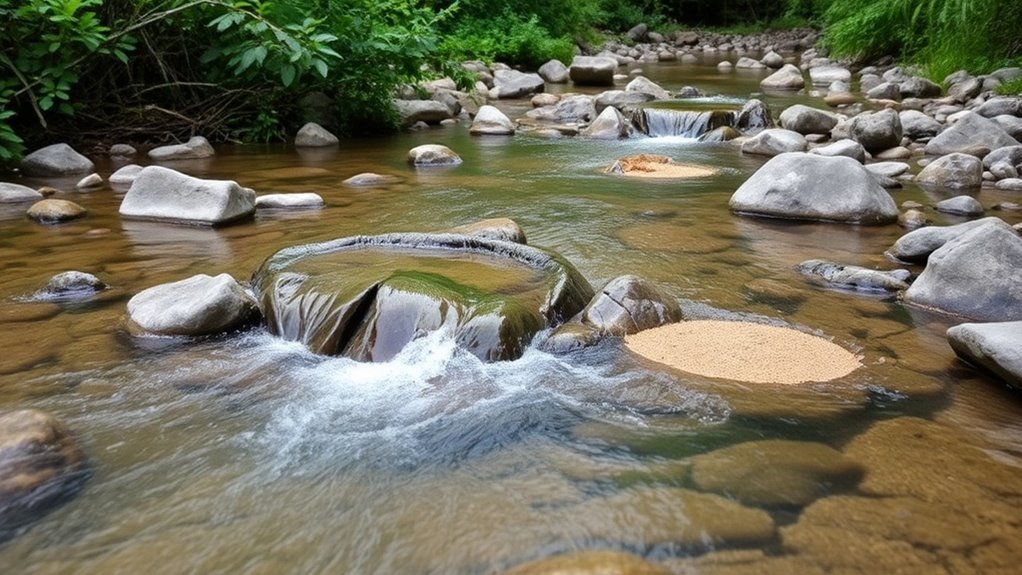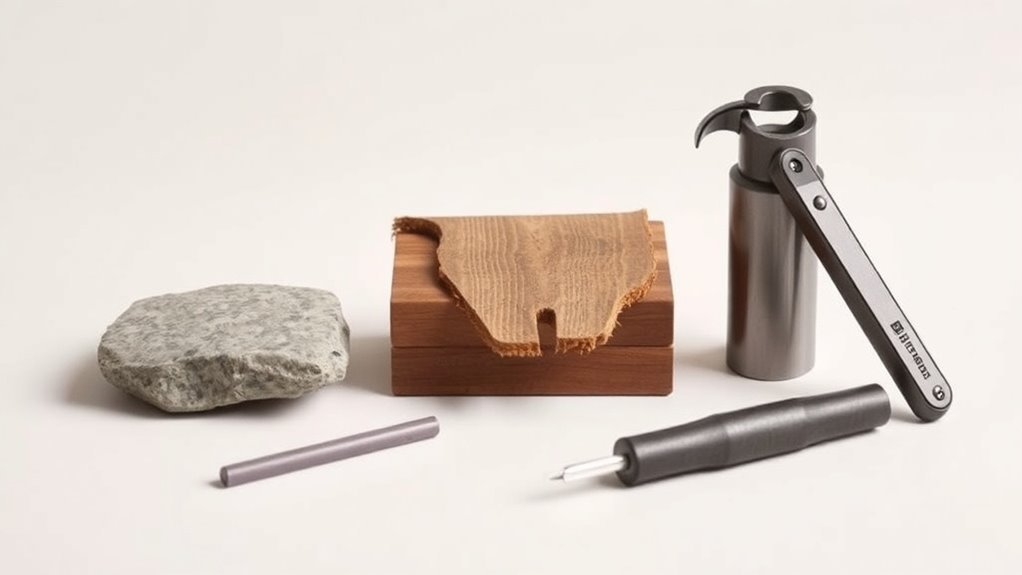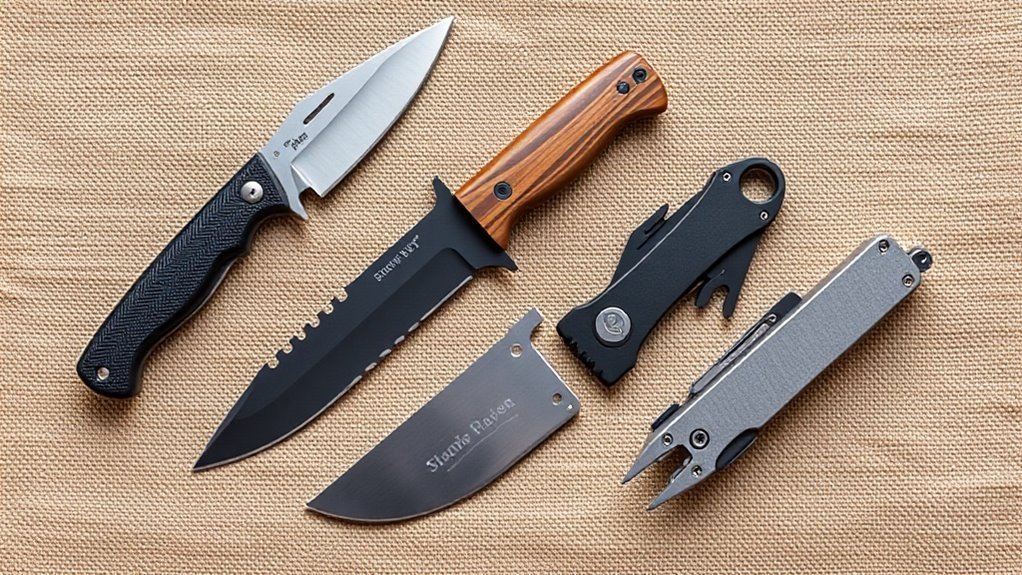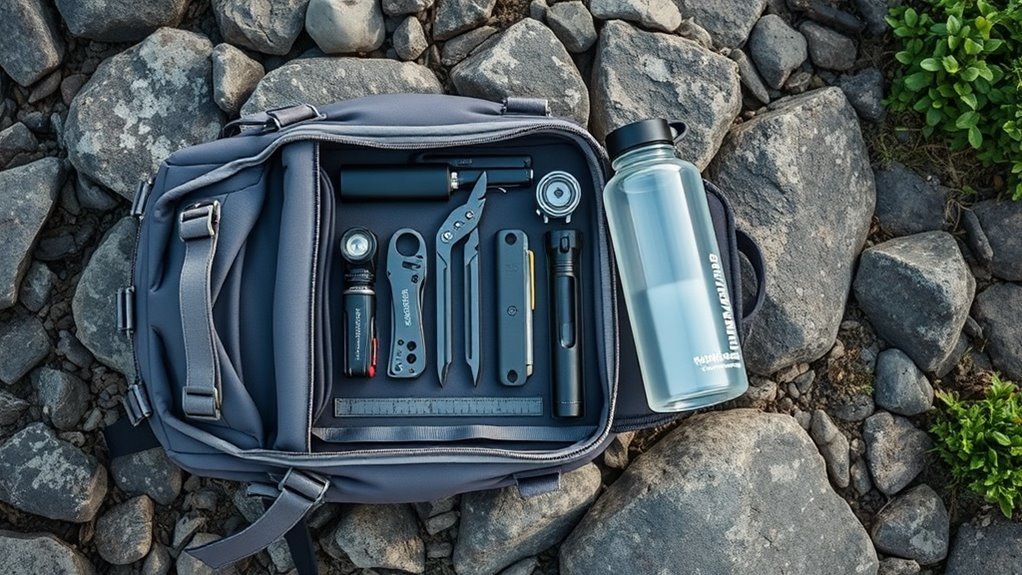History of Survival Kits and Their Evolution
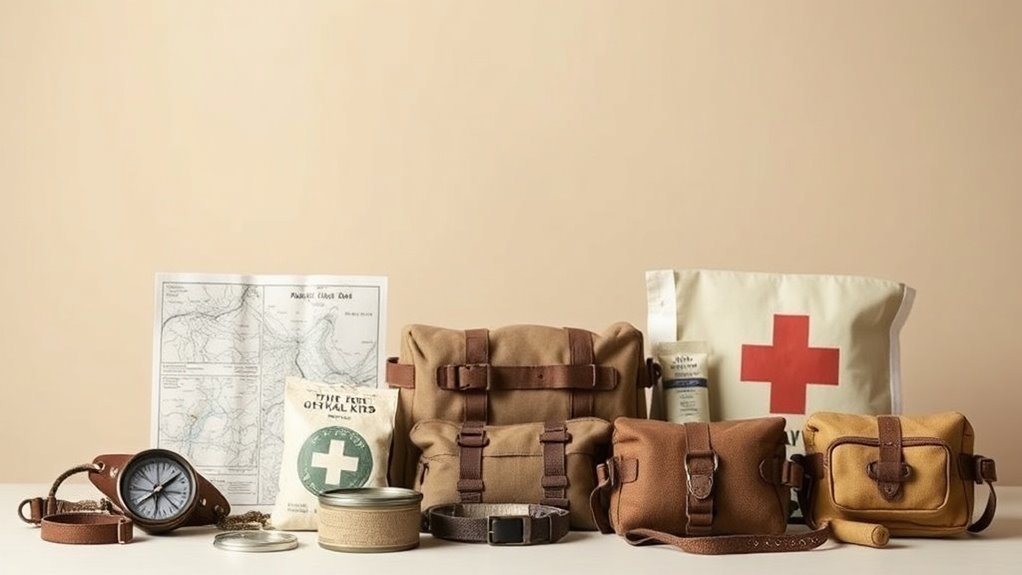
Survival kits have evolved from primitive tools vital for survival to modern, specialized gear. Early tools included sharp stones and fire-starting materials, while wars and natural disasters shaped their design. As outdoor recreation gained popularity, kits adapted to guarantee safety. Today, you’ll find urban-focused gear that includes tech and self-defense items. The evolution reflects changing needs and environments, highlighting the importance of preparedness. There’s much more to explore about their fascinating transformation and future.
Key Takeaways
- Survival kits originated with primitive tools essential for life, evolving based on environmental demands and available resources for survival.
- Historical advancements include multi-tool knives and lightweight tents, highlighting the need for versatile, portable survival gear in various situations.
- Wars and natural disasters significantly impacted survival gear development, leading to specialized items for emergency scenarios and immediate assistance.
- The rise of outdoor recreation influenced the evolution of survival kits, emphasizing safety and the integration of sustainable gear options for outdoor enthusiasts.
- Modern urban survival kits focus on compact supplies, smart technology, and customization, addressing specific risks and the lifestyle needs of city dwellers.
The Origins of Survival Kits
Since survival has always been a fundamental concern for humans, the origins of survival kits date back to our earliest days, when primitive tools and resources were essential for life.
You can trace these kits back to basic collections of items like sharp stones, fire-starting materials, and edible plants. As you adapted to different environments, your needs shifted, leading to more specialized tools and supplies.
For example, early fishermen would pack nets and fishing hooks, while hunters carried spears and traps. These essential items catered to immediate survival demands.
Over time, these concepts evolved into more organized kits, incorporating knowledge of local resources. This early ingenuity laid the groundwork for the thorough survival kits we rely on today.
The Importance of Preparedness Throughout History
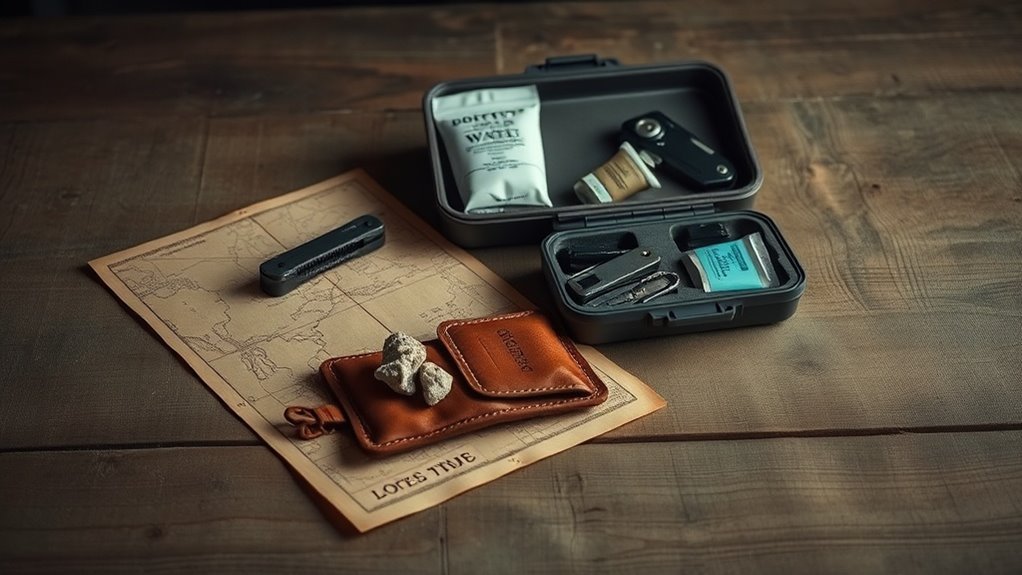
Throughout history, it’s become clear that preparedness can mean the difference between life and death.
Individuals and communities who took the time to plan, stock up, and train have often fared better during crises—be it natural disasters, wars, or emergencies.
Here’s why being prepared is essential:
- Safety: Preparedness helps minimize risks and guarantees you can respond effectively to emergencies.
- Resource Management: Having supplies can prevent panic and confirm you’ve what you need when it matters most.
- Community Resilience: Prepared families strengthen entire communities, fostering a sense of solidarity during challenging times.
- Psychological Readiness: Being prepared reduces anxiety and enhances confidence in facing uncertainties.
Moreover, having key items in a car emergency toolkit can further enhance your readiness in unexpected roadside situations.
These points highlight how preparation remains a fundamental aspect of survival throughout human history.
Early Survival Tools and Techniques
Early humans relied on sharp stones for cutting and scraping, enabling them to gather food and create shelter. Fire-making techniques, using friction or striking stones, provided warmth, protection, and a means to cook.
Early humans used sharp stones and fire-making techniques for survival, mastering food gathering and shelter creation against the elements.
Primitive traps and snares helped secure food, while woven baskets aided in transporting resources. Knowledge of local plants and animals was essential; foraging for edible items could mean the difference between life and death.
These tools weren’t just handy—they represented innovation and adaptability, laying the groundwork for more sophisticated survival gear you see today. Understanding the need for reliable cutting tools can enhance your preparedness in modern scenarios.
The Impact of World Wars on Survival Gear
As global conflicts erupted during the World Wars, survival gear underwent a significant transformation to meet the demands of soldiers and civilians alike. This evolution resulted in innovative designs and materials that increased durability and functionality.
You’ll find that key developments in survival gear included:
- Multi-tool knives: Combining various instruments into one handy device.
- Lightweight tents: Offering protection against the elements while remaining easy to carry.
- Water purification systems: Essential for safe drinking water in harsh conditions.
- Emergency rations: Compact, calorie-dense food designed to sustain soldiers in the field.
These advancements not only improved survival chances during wartime but also laid the groundwork for future survival kits, reflecting their importance in both military and civilian contexts. Additionally, the focus on ergonomics in knife handles during this period greatly enhanced the effectiveness of survival knives, allowing for better grip and control in critical situations.
The Rise of Outdoor Recreational Activities
With an increasing number of people seeking adventure and connection to nature, outdoor recreational activities have surged in popularity over the past few decades.
Hiking, camping, and kayaking draw enthusiasts keen to escape urban life and recharge. As you explore the great outdoors, you’re not just finding excitement; you’re enhancing your physical and mental well-being.
Outdoor activities like hiking, camping, and kayaking not only provide excitement but also boost your physical and mental health.
Groups and communities have sprung up to share experiences, fostering camaraderie among outdoor lovers. This trend has sparked a rise in specialty gear and survival kits designed to keep you safe while you embrace your adventures.
Additionally, the adoption of solar-powered gear has emerged as a game-changer, providing campers with sustainable energy solutions that enhance their outdoor experience.
As you venture out, you’ll discover the importance of being prepared, ensuring you can enjoy nature responsibly and safely, making outdoor recreation both exhilarating and sustainable.
Technological Advancements in Survival Kits
When you think about survival kits today, it’s clear they’re packed with smart technology that can make your life easier in the wild.
Compact designs and multi-function tools are changing how you prepare for outdoor adventures.
Let’s explore how these advancements are shaping the future of survival gear.
Smart Technology Integration
Though traditional survival kits have long provided essential tools for emergencies, the integration of smart technology has transformed how we prepare for crises.
Now, you can enhance your readiness with devices that offer real-time information and connectivity.
Consider these advancements:
- Smart apps: Access survival guides and emergency alerts at your fingertips.
- GPS trackers: Keep tabs on your location or your group’s whereabouts.
- Multi-functional gadgets: Tools like solar-powered chargers and water purifiers with built-in sensors.
- Wearable technology: Devices monitoring your health and offering alerts if something’s wrong.
Compact Design Innovations
As survival needs evolve, compact design innovations have made it easier than ever to carry essential tools without sacrificing functionality. These advancements allow you to pack your survival kit efficiently, ensuring you’ve got what you need without the bulk.
Here’s a glimpse of some key innovations in compact survival gear:
| Tool | Size | Function |
|---|---|---|
| Water Filter | Pocket-sized | Purifies drinking water |
| Survival Blanket | Foldable | Retains body heat |
| Multi-tool Kit | Phone-sized | Combines various tools |
Multi-Function Tools Development
Compact design innovations have paved the way for the next wave of survival gear: multi-function tools.
These compact powerhouses are essential for modern adventurers, combining various capabilities to prepare you for any situation. They’re lightweight, easy to carry, and can considerably reduce what you need to pack.
Consider these key features when choosing a multi-function tool:
- Built-in knife: for cutting tasks and food preparation.
- Screwdriver heads: to tackle repairs on the go.
- Can and bottle openers: for easy access to food and drinks.
- Pliers: versatile enough for gripping, twisting, and pulling.
Investing in a high-quality multi-function tool can considerably enhance your readiness for survival scenarios, making it a must-have in your survival kit.
The Role of Nature Disasters in Shaping Kits
Nature disasters have a profound impact on the design and contents of survival kits, as they highlight the specific needs that arise in emergencies. When faced with hurricanes, earthquakes, or floods, you need items that provide immediate assistance and comfort. Kits have evolved to include essentials tailored to these scenarios.
| Disaster Type | Key Kit Items | Purpose |
|---|---|---|
| Hurricane | Water, non-perishable food | Hydration and nutrition |
| Earthquake | Flashlight, whistle | Signaling for help |
| Flood | Waterproof gear, first aid kit | Protection and medical assistance |
Modern Survival Kits: Features and Trends
When you think about modern survival kits, it’s vital to take into account the essential gear components you’ll need for various scenarios.
Urban survival adaptations have also gained popularity, focusing on what’s necessary for city living during emergencies.
Let’s explore these evolving features and trends that can guarantee you’re prepared for anything.
Essential Gear Components
Survival kits today typically include ten essential gear components that can make all the difference in an emergency.
When you’re faced with unexpected situations, having the right tools can help you stay safe and secure.
Here are four crucial components you should always consider:
- First Aid Supplies: A basic trauma kit, bandages, and antiseptics can be lifesavers.
- Water Filtration System: Clean drinking water is critical; portable filters make it easier.
- Fire Starter Kit: Reliable means to ignite a fire, like waterproof matches or flint.
- Multi-tool: A versatile tool can assist with various tasks, from food prep to repairs.
Equipping your survival kit with these essentials prepares you for many unforeseen challenges.
Urban Survival Adaptations
As urban environments present unique challenges, modern survival kits have evolved to cater specifically to city dwellers. Your kit should include essential items like compact first-aid supplies, multi-tools, and portable water filters.
In densely populated areas, self-defense tools and emergency communication devices are critical. You’ll want to prioritize lightweight, space-saving gear since storage space is often limited.
Beyond physical items, urban survival kits now emphasize digital tools—apps for direction, emergency contacts, and local alerts. Some kits even integrate resources for shelter building in urban settings or guiding public transport during emergencies.
The Future of Survival Kits and Preparedness
Although the future of survival kits may seem uncertain, advancements in technology and our growing understanding of emergencies are set to redefine what preparedness looks like.
You’ll likely see more integrated solutions that cater to diverse needs and environments. Here are some key trends to expect:
- Smart technology: Wearable devices and apps will monitor your health and environment, providing real-time alerts.
- Sustainable supplies: Kits will prioritize eco-friendly materials, ensuring both effectiveness and environmental responsibility.
- Customized kits: Personalization will allow you to tailor your kit based on specific risks, lifestyle, and location.
- Community resources: Increased emphasis on shared resources, like community kits or neighborhood preparedness programs, to enhance collective safety.
- Enhanced safety gear: Anticipate the incorporation of personal protective equipment that can provide additional security during emergencies.
Embracing these changes can empower you to stay ready for the unexpected.
Questions
How Do Survival Kits Differ Across Cultures?
Survival kits differ across cultures based on local climates, available resources, and specific challenges. You’ll find unique tools and items tailored to each environment, reflecting the particular needs and knowledge of the people living there.
Are There Survival Kits Specifically Designed for Children?
Yes, there are survival kits designed especially for children! Picture vibrant backpacks filled with child-friendly essentials like miniature flashlights, colorful first-aid supplies, and snacks, making safety fun and educational for curious young adventurers like you.
What Are the Most Common Misconceptions About Survival Kits?
You might think survival kits are one-size-fits-all or that they’re only for outdoor enthusiasts. Many also underestimate the importance of regular checks, assuming items don’t expire or need replacement. Customization is key for effectiveness!
How Often Should You Update Your Survival Kit?
You should update your survival kit at least once a year or after significant changes in your environment or personal needs. Regular checks guarantee your supplies are fresh, functional, and relevant to current situations.
Can Survival Kits Be Customized for Specific Environments?
Think of your survival kit as a tailored suit—each component fits your unique environment. Whether it’s desert heat or snowy peaks, customizing tools and supplies guarantees you’re ready to tackle nature’s wild challenges.
Conclusion
In summary, survival kits have evolved considerably, adapting to our changing needs and increasing awareness of preparedness. Did you know that nearly 60% of Americans don’t have an emergency plan in place? As we face more natural disasters and uncertainty, investing in a well-equipped survival kit becomes essential. By understanding the past and present of these kits, you can guarantee you’re ready for whatever challenges lie ahead, embracing a proactive approach to survival.

